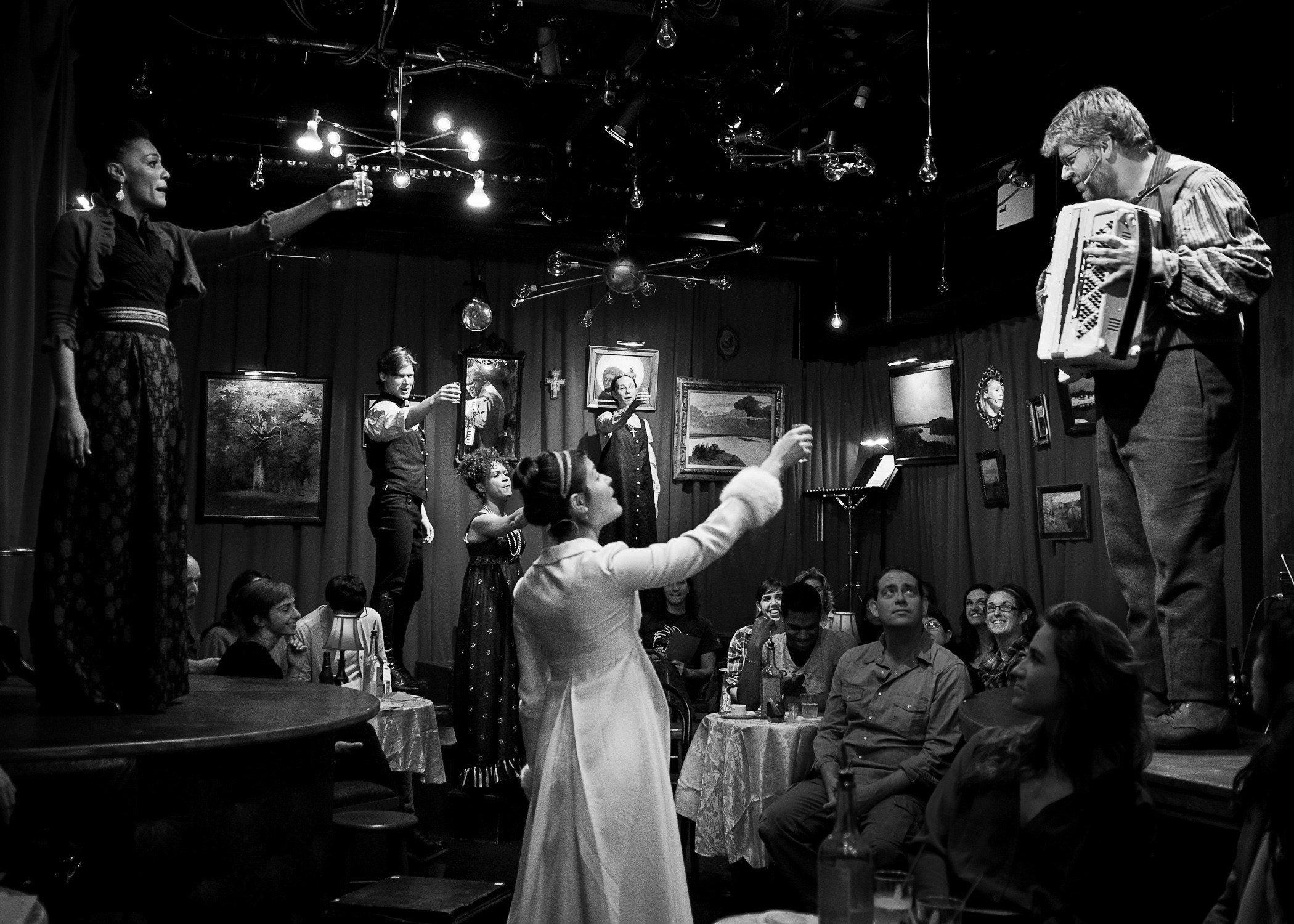Theatre Casts Are Family Too

When you look at this photograph, what do you see?
Do you see a group of talented actresses and actors? A group of friends having a good time?
What about a family?
In this photo, the 2015 Broadway cast of the Tony-award winning musical, Hamilton, is pictured onstage at intermission during yet another successful matinee. They are gathering around (at the time) President Barack Obama, who came to see the show with his family. I argue the Hamilton cast the Obamas just watched are a family of their own.
While this picture of a musical cast may not seem like a family photograph, feminist geographer Gillian Rose (2012) points out that “various feminist scholars have argued (see for example Blunt and Dowling 2007; Das et al. 2008; Mallett 2004), [that] domesticity is not necessarily coterminous with either family or house, the domestic does not exhaust the spatialities through which a house might be constituted.” “Doing family” (a spin on West and Zimmerman’s (1987) concept of “doing gender”) does not merely exist within the restrictions of traditionally defined nuclear families related through romantic and/or genetic relationships. As world famous drag queen RuPaul says, “We as gay people get to choose our family and the people we’re around.”
Theatre has long been a safe haven for those in the queer community to form their own families (although there are still a multitude of queer social issues even within the theatre community that have yet to be solved). While they may not be connected through genetics or romantic relationships, queer cast members are connected through close social bonds they are otherwise denied due to their marginalized status.
Another aspect of family photography that Rose explores is “togetherness”, or the feelings of family cohesiveness that family photography often induces. Casts often exemplify togetherness through their actions as a cohesive theatre company, or hanging out with each other after shows. In this particular photograph, the “HamFam” demonstrates togetherness by having a great deal of the company join together onstage for the photo.
Furthermore, as many feminist scholars have argued, family does not have to be confined to the people who share a single space meant for living—a home. If one were to argue a “real” family must be confined to members of the home, it should be noted that a theatre or auditorium is often referred to as “the house”. This Hamilton photo is taken on the stage of the house.
This onstage setting attributes to the photo’s public character. The public performance aspect of musicals mirrors the “performance” of the company’s poses in the picture, even after the curtain falls. Judith Williamson (1994) notes that early family photography and present-day formal family photography’s public audience often requires family members to adopt formal poses to make the impression that the family is upper class or socially acceptable.
The positioning of the cast in the photograph shows the goal for family photographs to demonstrate norms of class and social acceptability. In this photograph, the crew (seen as “lower class”) is stationed in the back, the lead actors are situated in front, and the creator of Hamilton/the main actor who plays the titular role, Lin-Manuel Miranda, stands closest to President Obama. Some crew members, office workers, or orchestra members are most likely excluded from the picture. While the person who took this photograph, former Chief Official White House Photographer, Pete Souza, most likely did not tell the company to pose in a hierarchical order, the company probably knew it would be socially unacceptable to arrange themselves otherwise, especially when they knew the photograph would be seen by someone outside of the family who occupies a class position a great deal above themselves. The only family member who comes somewhat close to former President Obama’s status is Lin-Manuel (in classist terms of net worth and fame), who again, is situated closest to the president. To further attribute to the photo’s public nature, (and the need to adhere to said public’s norms), Souza took the photograph with the intention of including it in a public gallery of annual photos involving President Obama. The company of Hamilton must present itself as professional to the larger public with “correct” comportment in this public photograph if they wish to attract an audience (and the exorbitant amounts of money the audience is still willing to shell out for tickets years from its debut).
Despite its public nature, this photo is also for the cast/family’s private use. The family photo aspect of togetherness can also be accomplished by the placement of the photographs themselves (Batchen 2000 as cited in Rose 43). Actors often adorn their dressing rooms with highly personalized items, placing objects of important emotional meaning together. In a way, this photograph has an important relationship to the future as a keeper of togetherness despite family members’ physical absence. At the time the photo was taken, the family was together. However, it is inevitable that the pictured members will eventually leave the house. Contracts will expire, and new company members will be hired into the family. Therefore, photograph serves as a nostalgic reminder of the family’s past togetherness.
All in all, this photo of the Hamilton cast exemplifies that family is not limited to families we are born into. Rather, family can exist through aspects like togetherness. However, that togetherness is often performed much like a stage show: there are prescribed rules and regulations, especially if the family takes a photograph that is meant to be seen by (and to sell something to) the public. And when a family is not physically together, they can recreate togetherness by placing family photographs in close proximity, and by looking back at them for fond memories of family members who may no longer live (or perform) under the same “house”.




